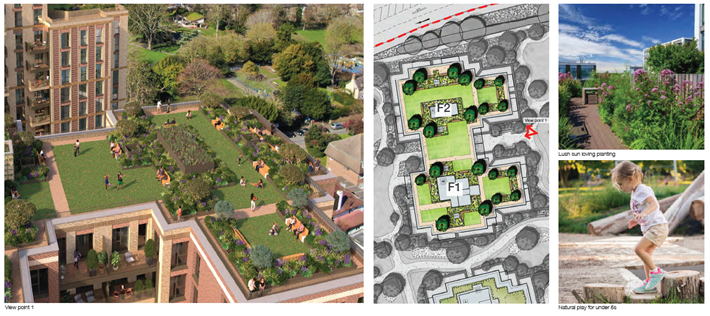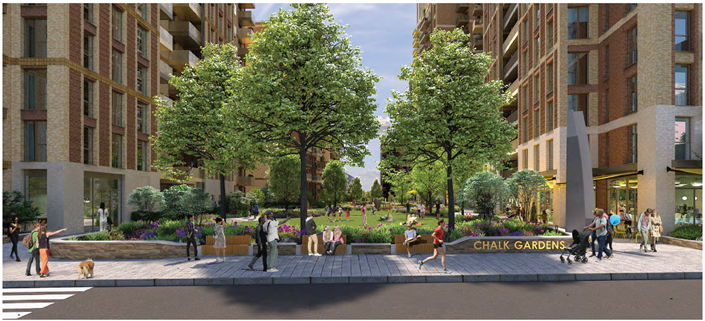Case study – Delivering Significant (>150%) Biodiversity Net Gain in Greater London
February 2024
Under the Environment Act, from 12 February 2024 developers are required to deliver a 10% biodiversity net gain (BNG) as part of new planning applications, while this may also be a local policy requirement in some locations. Delivering a 10% net gain can be very difficult for some sites, but this is not always the case. Where gains in excess of 10% can be achieved, these can provide an additional positive benefit of an application and be pivotal in tipping the planning balance.
Aspect Ecology has recently worked on a number of urban schemes where 10% BNG has been exceeded. Indeed, with good design established at the outset of the project, it has been possible to not just exceed 10% but to achieve significant biodiversity gains in excess of 100%. Where achievable, such sizeable gains are eye-catching and can greatly assist with securing the grant of planning permission.
A recent example of such a project that Aspect Ecology has advised upon is St George’s ‘Chalk Gardens’ scheme (Ref: DM2022/01764) in the London Borough of Sutton. The development will deliver over 970 new homes, along with 929 sqm of commercial use. The scheme also includes over 300 trees alongside extensive biodiverse green roofs, gardens, shrub planting and other greenspace such that the BNG assessment anticipates the delivery of a 171% increase in biodiversity across the site. The value of such a biodiversity gain is evident in the committee report, which set out that ‘given the BNG being reported at more than 171% compared with the Government’s expected target of 10%, and having regard to some remaining concerns, it is considered that the balance of considerations weighs towards a recommendation to support’.
Read more about biodiversity net gain in our brochure ‘Briefing for developers. Biodiversity Net Gain – The Basics’ accessible from our website here.
Follow Aspect Ecology on LinkedIn for all our latest news LinkedIn Page
Extracts from Design & Access Statement by St George and landscape design by Murdoch Wickham



